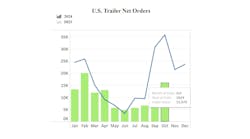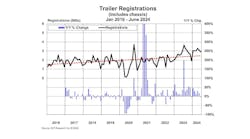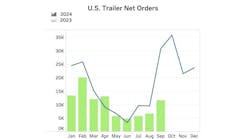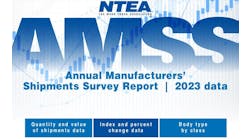Talk of recession really started ramping up last month, and the primary driver behind the hyperbolic headlines has been an otherwise obscure financial measure that suddenly became the focus of the business media. Ladies and gentlemen, meet the Inverted Yield Curve.
An inverted yield curve is an interest rate environment in which long-term debt instruments have a lower yield than short-term debt instruments of the same credit quality. This type of yield curve is the rarest of the three main curve types and is considered to be a predictor of economic recession, according to Investopedia.
And just such an inversion coincided with the summer seminar by industry forecaster ACT Research. And the conference center in lovely downtown Columbus, IN was the perfect place to be in a time of would-be crisis: Economists were everywhere. I felt like the guy who’s afraid he’s having a heart attack, then stumbles into a cardiologists’ convention.
Mark Vitner, managing director and senior economist with Wells Fargo Securities, explained that his forecast didn’t anticipate a recession this year or next, but “the history of the inverted yield curve is pretty compelling.”
“When you read the Wall Street Journal, which is a pretty good paper to talk about things like this, even they simplify it a little too much,” Vitner said. “There is a real level of concern because the inversion signals some sort of trouble in the economy. In a sense, it’s crowdsourcing information from people that actually do have real money on the line, that are paying attention to the economy pretty much 24/7. And they are so concerned that they are buying treasury bonds at very, very low interest rates and locking them in. So their view, for some reason, has become much more concerned.”
However, he was quick to note, there have been times when the yield curve inverted and a recession didn’t follow. But “there haven’t been that many.”
He does offer some good news: The lead time from the inversion to the beginning of a recession is about 18 months, pushing it out toward 2021. And, he added, he was just about to begin building his 2021 forecast.
“If we thought a recession would begin in the second quarter of 2021, we’d have to have some justification for it,” Vitner said. “And when you do a bottoms-up analysis of the economy, instead of a top-down—which is kind of what the yield curve inversion does—the economy looks pretty good, and we’ve had pretty strong momentum.”
Indeed, he pointed out that the US is currently into the 11th year of the post-recession business expansion. And ACT Principle and Industry Analyst Jim Meil took that record and ran with it. He made the case, based on an array of factors, that the expansion will continue for another five years.
And while there are always potential “shocks” to an economy that can halt that momentum, he doesn’t see any problems that compare to previous recession kickstarters—with the possible exception of next year’s presidential election.
“We think there are enough things on the positive side of the ledger to say this thing will go on,” Meil concluded, before noting his 1-in-3 chance that the economy will stall. “If you get that problematical trigger event with a vulnerable US and global economy, that spells trouble.”
Sam Kahan, ACT Research’s chief economist, likewise made the case that even as the US economy slows, we will avoid recession. But he points to three areas to keep an eye on for those potential shocks: consumer and business sentiment, fixed business investment, and global uncertainty.
“But we still think that we will avoid a recession. The risks are there, and the question is how they work out,” Kahan said. “Manufacturing and transportation are the most vulnerable sectors. The downside risks are more prevalent, and the consequences are more than the positive risk.”
So, no need to fear the yield curve. It’s just a sign that the financial community is nervous, but it’s a nervousness based on what could happen—not what’s happening right now. Nothing wrong with that, unless too much talk about what could happen actually starts to bring people down—and the economy with them.
So let’s all do our part and buy more stuff, because more stuff means more freight, and more freight means fleets will make more money and buy more equipment. And then we can all buy more stuff.










